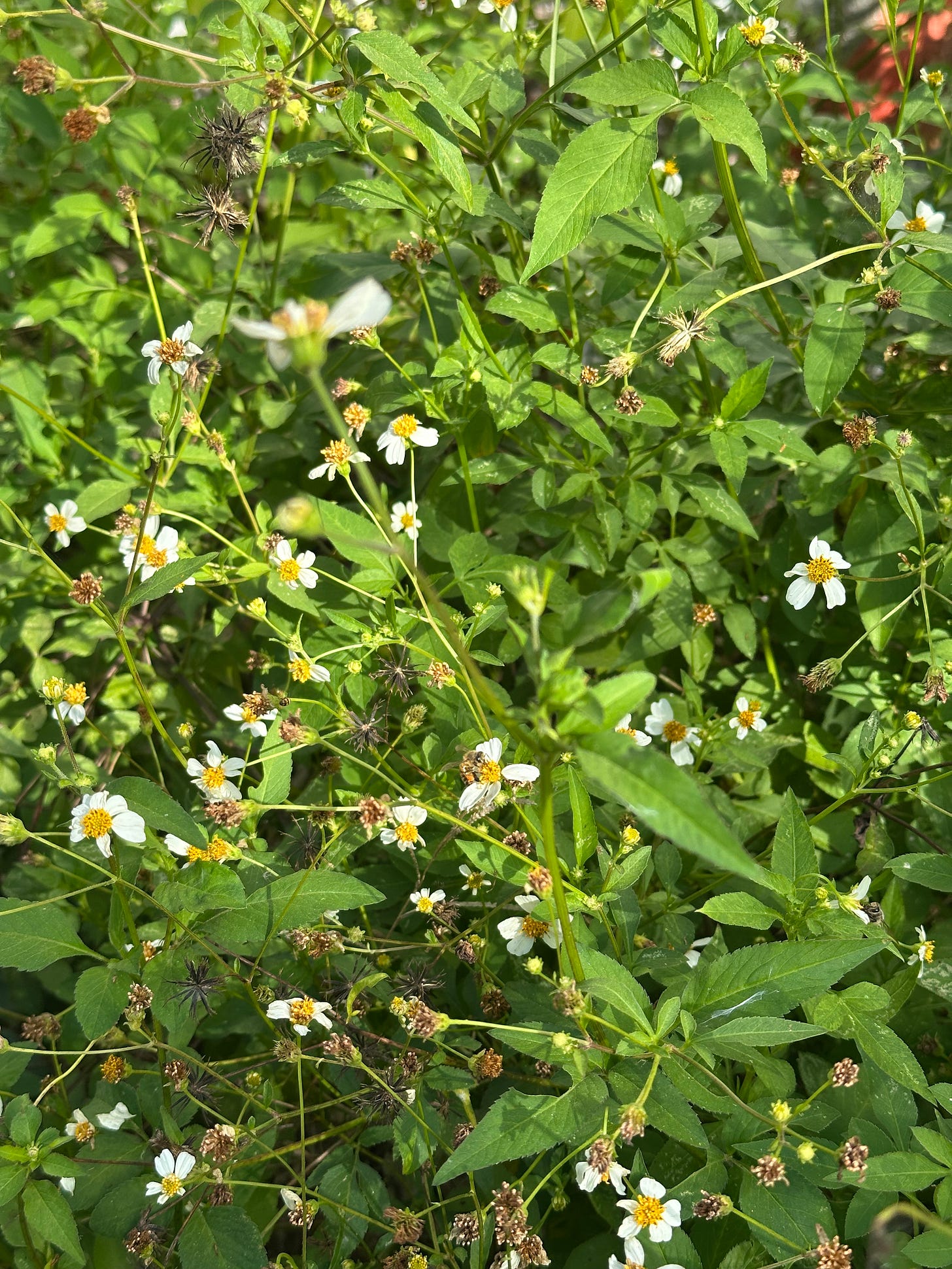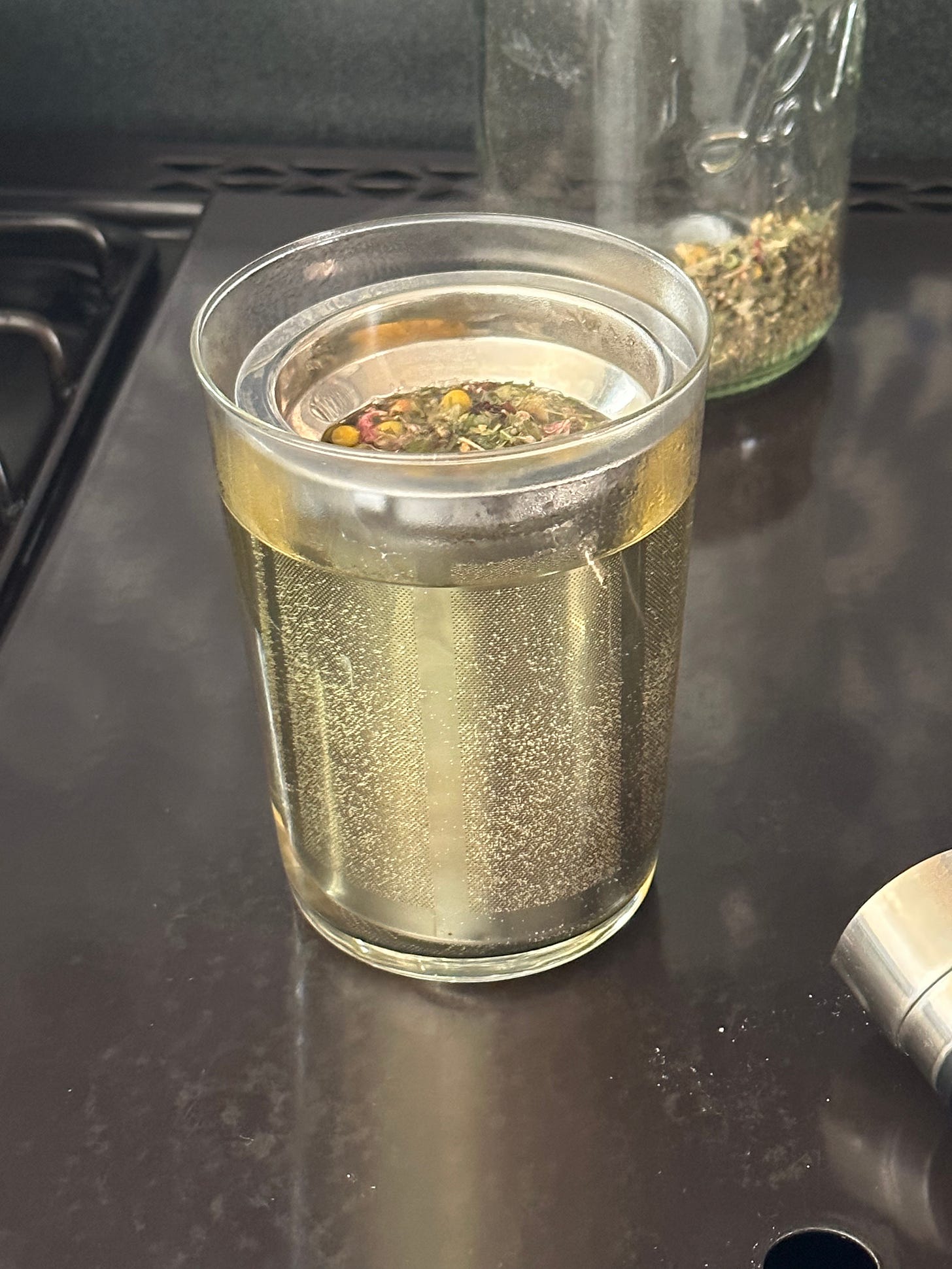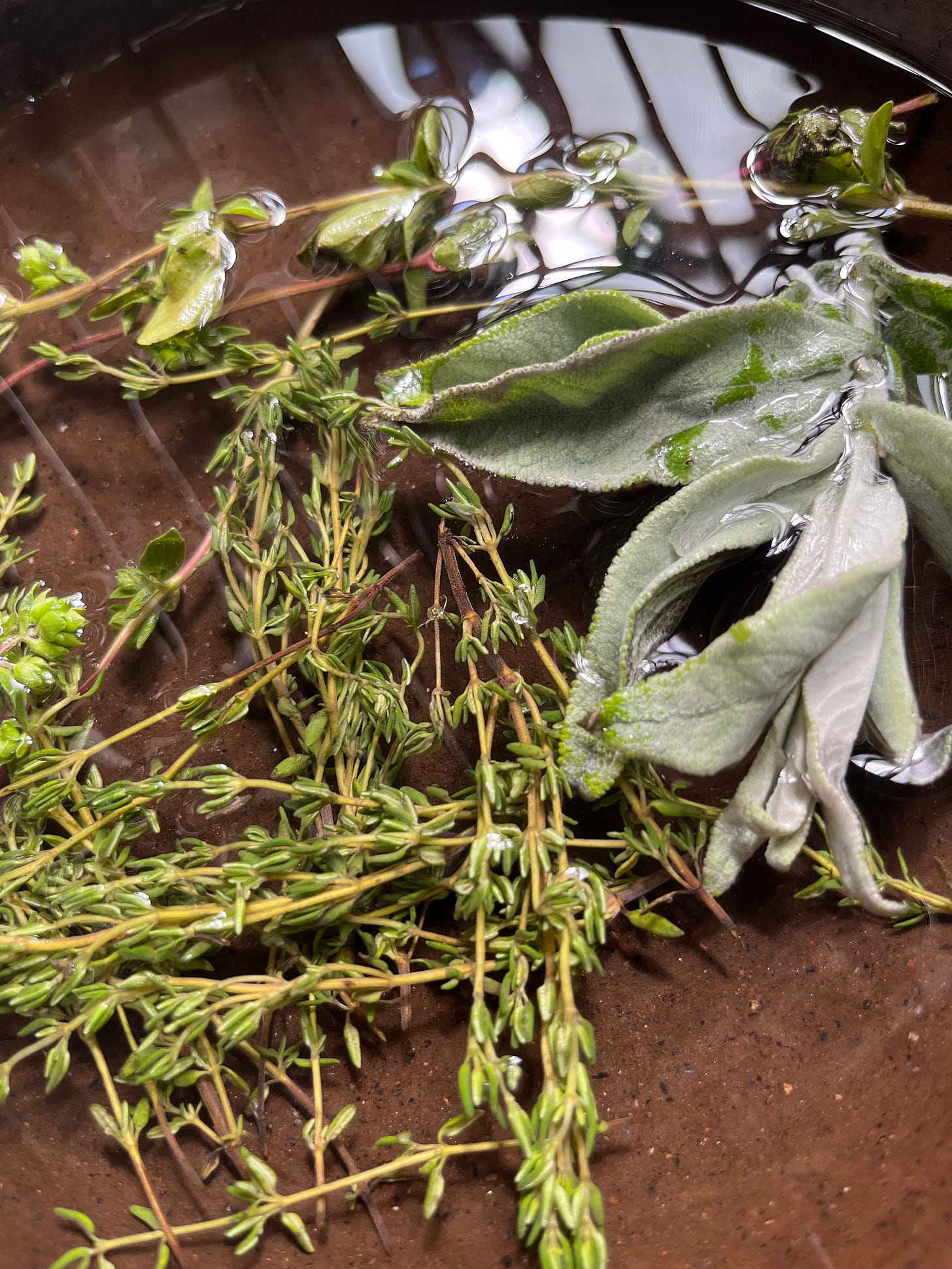Weed, Wildfire Smoke & Herbal Remedies for Respiratory Relief
Ways to soothe the throat and lungs from weed, wildfires, and winter weather
As of today, over 40,000 acres in Los Angeles have been reduced to ashes, with nearly 150,000 people evacuated from their homes. 24 lives have been tragically lost, 31 people are still missing, and emergency air quality warnings are in place, with grave health concerns for residents. Despite many fires still actively burning, it may feel like old news amid the endless cycle—a pending ceasefire, the contentious new presidential administration confirmation hearings, and the looming threat of mass deportations.
Yet what’s happening in LA affects us all, the rich and the poor alike. The full scope of the loss is too soon to fully comprehend, but it is undeniably devastating. What haunts me most are the predatory real estate developers—scavengers circling the still-embers of homes, where generations of wealth and memories have been reduced to ash—ready to buy up the land from residents who have lost everything.
The impending future of late-stage environmental colonialism has for decades been descending upon us, violently staring us in the eyes, promising its foreshadowing of what is to come during a new era of environmental and man-made crisis. According to postdoctoral fellow, Kelly Duquette Williams, a scholar of ecocriticism and premodern race studies, “Environmental colonialism refers to the various ways in which colonial practices have impacted the natural environments of Indigenous peoples,” Williams reminds us. I would go even further to say that this insidious form of colonialism goes beyond what is indigenous as it is killing off all of us and the few resources we collectively have left.
“Environmental colonialism refers to the various ways in which colonial practices have impacted the natural environments of Indigenous peoples.” — Kelly Duquette
As many of you know, I co-founded an herb brand centered on supporting menstrual and menopausal bodies after years of cultivating cannabis (sometimes alongside other herbs). It’s a quiet flex that has allowed me to deepen my understanding of how plants can be used to heal. It's this knowledge that I almost instinctually turn to now in response to the devastation in LA and the broader environmental and societal suffering.
The new year has already brought with it a cascade of tragedies abroad, not to mention the ongoing genocidal terror in Sudan, Congo, Palestine, and Lebanon. In truth, I haven’t yet found the words (except, apparently the 1,902 words here) to express my deepest condolences for the extreme loss. For the past week, while on a short self-funded writing residency, I’ve sat with the discomfort of how hopeless it feels not to be of any support. What does my work do for those burning alive? How am I in service to others and not just myself? But then, I’m reminded of my ties to herbalism and my, admittedly, ad hoc education in herbs. I decided that one small offering, for now, would be to share these herbal applications for respiratory care, alongside the LA wildfire resources below.
These remedies are also helpful for those who consume cannabis in combustible smoke form or who are dealing with the seasonal ailments of winter weather—namely, coughs, colds, flu and congestion.
Herbal Respiratory Health Recipes —
Herbal Tea
The easiest and most basic way to soothe the throat from any congestion or discomfort is by consuming hot herbal tea. It can be anything from a cheap little Lipton tea bag—to wild-crafted and sourced whole-leaf tea from one of those fancy white lady LA shops. The quality of herbs is very important, yes, but even just drinking tea or hot water feels really good. The simple act of drinking herbal tea has been stated in many studies to support the immune system, and suppress inflammation with the added benefits of antioxidants… the list goes on and on.
As a basic intuitive rule of thumb, herbs with a naturally sweet, minty, cooling smell and flavor profile will be beneficial for the respiratory system (and sometimes the gut). Think herbs like peppermint, licorice root, even ginger) Teas made from herbs like these will create an energetically wetting, and duo warming/cooling sensation to the actual throat area, loosen up anything gross in there. It can physically soothe the respiratory system with a thin wet plant-based layer of a gel-like mucilage, a substance made from herbs that coats the throat and reduces irritation on contact.
Drinking herbs for respiratory support
Peppermint (activates throat receptors)
Licorice Root (anti-viral, repairs burning sensation)
Rose (anti-microbial & anti-inflammatory and pretty)
Spearmint (antioxidant & throat relief)
Marshmallow root (coats throat & has some cellular healing compounds)
Chamomile (astringent for throat & immune stimulation)
*please drink the highest quality of organic or wild-crafted herbs available to you.
Herbal Steam Inhalation
Inhalation herbal therapy has been used in myriad cultures and folk medicine throughout the globe for as long as we could grow herbs and heat water. I always forget how effective and accessible it is. The steam helps to relieve congestion by widening the soft tissue of our sinuses and nasal airways, letting the steam ease the congestion through its vapor. Steaming is also fab for the skin on the face (once you keep a safe distance from super hot steam), and it doubles for soothing irritation of the lungs, like after you pulled too hard of that blunt and it left you coughing and with a scratchy throat. It works magic during cold and flu season. And just really helpful you’ve had to breathe in an actual fucking wildfire for the past two weeks.
I’m not saying herbal steam will treat infections, but I am saying that it’s a gentle at-home option for relieving the symptoms of discomfort in the throat.
What you need:
Any one or combination of these herbs *organic*
1 handful Eucalyptus, fresh or dried
1 handful Peppermint, fresh or dried
1 handful Sage, fresh or dried
1 handful Chamomile, fresh or dried
Rose (just cause it feels luxurious) fresh or dried
Large bowl
Medium towel
Water kettle
What to do:
Start by sourcing herbs are that wild-crafted, organic, or safely foraged. Heat kettle until water boils.
Slowly, gingerly and carefully pour the hot water into the bowl.
Drape the towel over the back of your head, letting it cover the sides of your face and the bowl.
Carefully and slowly bring the head toward the hot water, closing your eyes (about 12 in / 30cm away from the bowl of water. *Please note that you should keep your eyes closed to avoid irritation!
Inhale and exhale very slowly and deeply through your nose for about 10 slow breaths.
Steam in 15 minute increments 2-3 times a day.
(please be careful not to tip over hot water and steam out of reach of pets or small children.)
Herb Syrup
Many herbalists, mothers, and caretakers have been using this time-honored method to give kids and adults (with baby palates) bitter herbs. Cough syrup itself is basically a chemical form of this OG method of taking medicine. Just a spoon full or sugar helps the medicine go down. I prefer to use agave or honey with these syrups, but if you only have access to sugar, use the sugar.
What you need (choice of one or many):
Elderberry, dried
Ginger root, fresh or dried
Peppermint, fresh or dried
Oregano, fresh or dried
Hop Flower, dried (not necessarily beneficial for the throat but great to add as a gentle sleep aid)
What to do:
Take 1 ounce of dried herbs (this reminds me that I need to buy more weed) into a pot with 16 ounces of water. Heat slowly until it comes to a gentle simmer.
Partially cover the pot and let the herbs steep, letting the water reduce by half until it renders close to 8 ounces of water remaining. This will take about 30–45 minutes.
Once reduced, strain out the herbs, pressing them to extract as much liquid as possible.
Add 8 ounces of agave, honey, or sugar to the strained mixture. Return the mixture to low heat and stir constantly until your sweetner of choice is fully dissolved. *If possible, make sure the temperature doesn’t exceed 110°F (43°C).
Let the syrup mixture cool completely and bottle it into clean, sterilized glass bottles.
Take 1 tablespoon 4 times a day. You can store the syrup in the refrigerator for up to six months
PRO-TIP
If hot packing the syrup, wait until it’s completely cool before sealing the bottles to prevent condensation, which could lead to premature bacterial growth.
(Recipe adapted from Mountain Rose Herbs)
Wild Fire Resources:
Mutual Aid:
LA Mutual Aid Network — https://mutualaidla.org/
County of Los Angeles: — https://lacounty.gov/emergency/
Octavia’s Bookshelf – is a Black-owned bookstore in Altadena that currently serves as a hub for the community and various needs
Everybody World HQ — Fire relief, offering free garments for those who lost their homes)
Wildfire Workers Rights — Resources
LA Fire Mutual Aid Hub Tool: https://www.fireaid.info/
Donation & Relief Funds for Workers
LA Labor Community Services Fire Relief Fund:
https://lcs-la.org/la-fire-reliefCA Fire Foundation Wildfire Relief:
https://cpf.salsalabs.org/disasterrelief/index.html
https://iatse.net/socal-fires/National Nurses United/ CA Nurses Foundation:
https://www.nationalnursesunited.org/rnrn-disaster-relief-fundUAW Region 6 LA Wildfire Hardship Fund:
https://givebutter.com/region6hardship
Fire Clean-up Resources: (Spanish / English)
Emergency Resources available for Those Impacted by the Wildfires: https://housing.lacity.gov/emergency-resources-available-for-those-impacted-by-the-wildfires
Disaster Recovery Centers: https://emergency.lacity.gov/
Resource Map: https://emergency.lacity.gov/recovery#map
Disaster Relief for Union Members
Labor Community Services – Los Angeles Assistance Intake Form: https://docs.google.com/forms/d/e/1FAIpQLSfToMjzqeTqF7GVEpPGFIyGUfWzoZNk3B1le7Zit820Bs2Xcw/viewform
DGA:
https://www.dga.org/News/Guild-News/2025/Jan2025/2025-LAWildfires_ResourcesCA Teachers Association Application & Donation:
https://www.cta.org/for-educators/member-benefits/los-angeles-wildfire-reliefSEIU Local 2015 Application:
https://www.seiu2015.org/member-benefits/seiu-2015-disaster-relief-fund/UAW Region 6 Hardship Fund Application:
https://docs.google.com/forms/d/e/1FAIpQLScpPD1nTrkYBRZPKNzoJn-d50VZmIBXuOrjAykjm4YVHKxxIw/viewform?usp=dialogCFA Member Disaster Relief:
https://www.calfac.org/disaster-relief-available-to-support-members-during-wildfires-3/LA County Federation of Labor:
https://thelafed.org/resource/california-wildfire-resources/SEIU Local 99:
https://www.seiu99.org/2025/01/08/know-your-rights-resources-during-the-fire-windstorm-emergency/Teamsters Local 399:
https://www.ht399.org/fire-related-emergency-resources/UAW Region 6 Member Support:
https://uc-uaw.jotform.com/250074842741051UFCW Local 770:
https://www.ufcw770.org/wildfireresources2025SEIU Local 2015:
https://www.seiu2015.org/fires2025/









Do you have any experience using Mullein?
Smoking or brewed in tea.
i feel like no one talks about the importance of making sure your herbs are organic and wild crafted (as is accessible) !!!